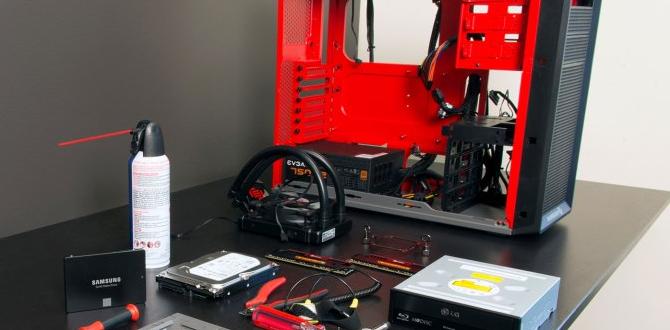When it comes to constructing your own gaming PC, many enthusiasts wonder whether the process is daunting or manageable. As a tech-savvy individual, I set out to explore this question by delving into the intricacies of building a custom gaming rig from scratch. From selecting the right components to troubleshooting any potential issues, the journey of crafting a personalized gaming setup can be both rewarding and educational.
Factors in Building
Compatibility of Parts
One of the critical considerations when building a gaming PC is ensuring that all components are compatible with each other. This involves researching the specifications of each part, such as the motherboard, CPU, GPU, RAM, and power supply, to avoid any compatibility issues that may arise during the assembly process.
Pre-Build Preparations
Research Required Components
Before diving into the building process, it is essential to conduct thorough research on the components needed for your gaming PC. This includes selecting a suitable CPU, GPU, RAM, storage drives, cooling systems, and power supply that align with your gaming preferences and budget constraints.
Assembly Process
Step-by-Step Guide
Assembling a gaming PC involves a series of steps that require attention to detail and precision. From installing the CPU and GPU onto the motherboard to connecting the power supply and storage drives, following a step-by-step guide ensures a smooth and efficient assembly process.
Testing and Troubleshooting
Ensuring Working Order
Once the components are assembled, it is crucial to test the gaming PC to ensure that all parts are functioning correctly. This includes checking for boot-up, running diagnostic tests on the hardware, and troubleshooting any issues that may arise during the testing phase.
Finalizing Setup
Installing Necessary Software
After confirming that the gaming PC is in working order, the final step involves installing the necessary software, such as the operating system, drivers, and gaming applications. This allows you to customize your gaming experience and optimize the performance of your newly built PC.
Conclusion
Building your own gaming PC can be a challenging yet rewarding experience that allows you to tailor your setup to your specific gaming needs. By following a comprehensive guide and paying close attention to compatibility and assembly details, you can successfully create a personalized gaming rig that suits your preferences.
FAQs
1. Do I need prior experience to build a gaming PC?
No, you can learn how to build a gaming PC through online tutorials and guides even without prior experience. Patience and attention to detail are key.
2. How long does it take to build a gaming PC?
The time required to build a gaming PC can vary depending on your familiarity with the process and the complexity of the components. It can take anywhere from a few hours to a full day.
3. Can I upgrade my gaming PC in the future?
Yes, one of the benefits of building your own gaming PC is the flexibility to upgrade components in the future to enhance performance and capabilities.
4. Is building a gaming PC cost-effective compared to buying a pre-built one?
Building a gaming PC can be cost-effective as you have control over the components you choose and can avoid paying for pre-built markup costs.
5. What tools do I need to build a gaming PC?
Common tools needed to build a gaming PC include a screwdriver, antistatic wrist strap, cable ties, and thermal paste for CPU installation.
